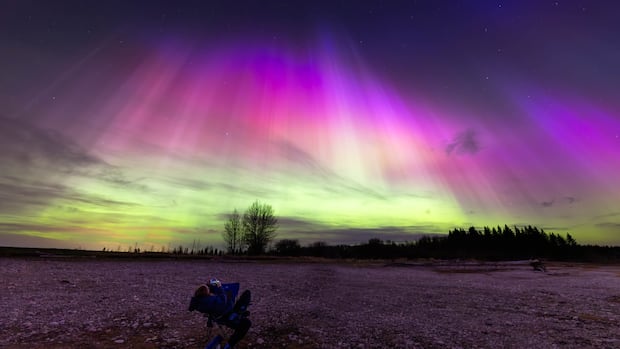After a northern lights display on Monday night, there may be another good chance to see them tonight

Skywatchers were treated to a moderate display of the northern lights on Monday night, and there’s still a chance they may be visible again tonight with a stronger geomagnetic storm forecasted by the U.S. National Oceanic and Atmospheric Administration’s Space Weather Prediction Center (SWPC).
The sun has been quite active lately, with many sunspots on its surface that can unleash solar flares. These flares can disrupt radio transmissions on Earth and are often followed by coronal mass ejections (CMEs) that interact with our magnetic field to create beautiful auroras.
Two CMEs were unleashed on the sun on Aug. 30, with the second eruption being more powerful than initially thought. This has led to a forecast of a strong geomagnetic storm for Tuesday night, with the potential for auroras to be visible.
Forecasting auroras is notoriously difficult, but there are apps available to help determine if they are visible in your area. Remember the amazing displays of the northern lights on May 10, 2024, and Oct. 10, 2024, when the storms reached G5 despite initial forecasts of G3 or G4.
As for the current storm forecast, the first impact occurred on Monday, with the second anticipated for Tuesday. Canadians at high latitudes are expected to experience severe storm conditions, while those in mid-latitudes have a 50% chance of seeing a strong geomagnetic storm over the next 24 hours.
Several factors determine whether auroras will be visible, including the speed of the solar wind and the position of the auroral oval. The higher the Kp index, ranging from one to nine, the stronger the geomagnetic storm. As of now, the Kp is at four, with the auroral oval dipping into northern Europe.
Fingers crossed for a great show for Canadian aurora photographers if the magnetic field of this storm is favorably oriented, potentially even reaching mid-latitudes.




